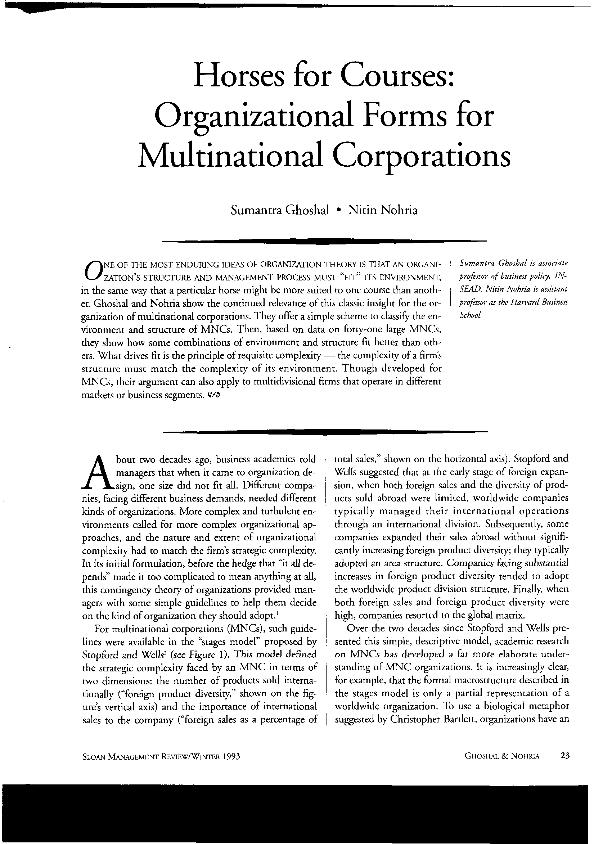Horses for courses : organizational forms for multinational corporations

Contenido multimedia no disponible por derechos de autor o por acceso restringido. Contacte con la institución para más información.
| Tag | 1 | 2 | Valor |
|---|---|---|---|
| LDR | 00000nab a2200000 i 4500 | ||
| 001 | MAP20071012662 | ||
| 003 | MAP | ||
| 005 | 20080418113312.0 | ||
| 007 | hzruuu---uuuu | ||
| 008 | 930326e19931221usa|||| | |00010|eng d | ||
| 040 | $aMAP$bspa | ||
| 084 | $a922.111.1 | ||
| 100 | 1 | $0MAPA20080192709$aGhoshal, Sumantra | |
| 245 | 1 | 0 | $aHorses for courses$b: organizational forms for multinational corporations$cSumantra Ghoshal, Nitin Nohria |
| 520 | $aOne of the most enduring ideas of organization theory is that an organization's structure and management process must "fit" its environment, in the same way that a particular horse might be more suited to one course than another. Ghoshal and Nohria show the continued relevance of this classic insight for the organization of multinational corporations. They offer a simple scheme to classify the environment and structure of multinational corporations (MNCs). Then, based on data on forty-one large MNCs, they show how some combinations of environment and structure fit better than others. What drives fit is the principle of requisite complexity -the complexity of a firm's structure must match the complexity of its environment. Though developed for MNCs, their argument can also apply to multidivisional firms that operate in different markets or business segments | ||
| 650 | 1 | 1 | $0MAPA20080563608$aOrganización |
| 650 | 1 | 1 | $0MAPA20080572945$aMultinacionales |
| 650 | 1 | 1 | $0MAPA20080555061$aManagement |
| 650 | 1 | 1 | $0MAPA20080602666$aModelos organizativos |
| 650 | 1 | 1 | $0MAPA20080618599$aTeoría de la organización |
| 700 | 1 | $0MAPA20080079505$aNohria, Nitin | |
| 740 | 0 | $aSloan management review | |
| 773 | 0 | $wMAP20077000185$tSloan management review$dBoulder$gWinter 1993 ; p. 23-35 |

